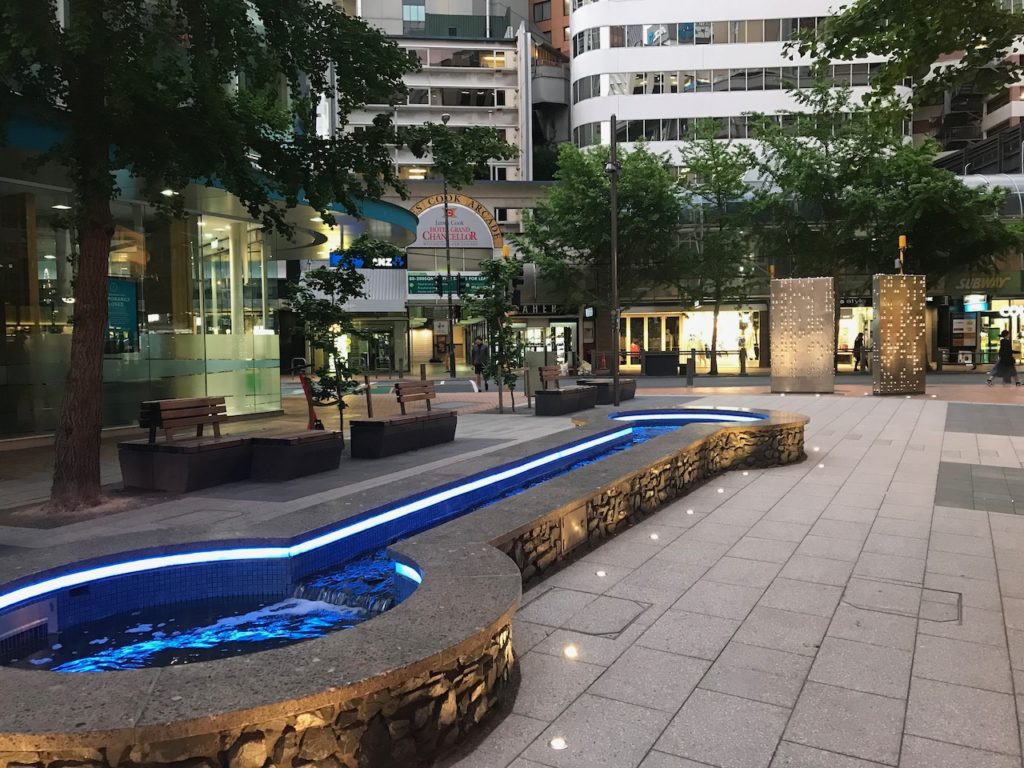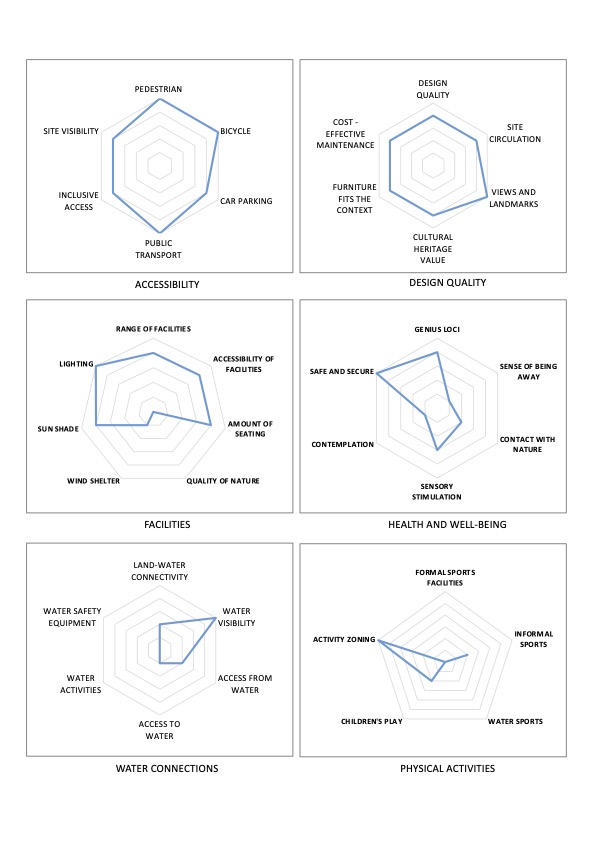
Architect
Hugh Nicholson- Grey street water features;
Bill Culbert- Sky blues;
Athfield Architects- Taranaki Lagoon and Bascule bridges;
Catherine Griffiths, Athfirld Architects and Hugh Nicholson-Illuminated information signs;
Architecture workshop, Isthmus Group, Hugh Nicolson, Gerald Blunt- Orinetal Bay beach;
Andrew Drummond- Tower of light;
Kon Dimopoulos-Pacific Glass
Type of Area
Lagoon
Ornamental water feature or fountain
Land/water interaction
Harbour
Sandy beach
Fountains
Built Environment Types
Completely built
Scale of Impact
District/neighbourhood
City
Regional
Intervention Scale (Spatial)
Multiple sites
Project Types
Waterfront development
Urban water features
Urban design
Urban/ Rural
Inner urban area
Visibility and Openness
Fully enclosed
Fully contained view
Light as a design element
The Waterfront Lighting Strategy has been developed to connect the city of Wellington to the historic waterfront. The goal was to make the Lambton Harbour a night-time destination with a lighting framework to illuminate the wider waterfront area. The project defined minimum lighting standards for each of the precincts covered by the strategy. Thus it is a rather specialised project and is not a specific blue space creation.
Whilst the overall strategy was to unify lighting to illuminate the waterfront and provide safe routes to the water views, designers were given scope to develop unique approaches to lighting public spaces. Lighting had to be appropriate to the activities, prevent light pollution and not detract from the dark harbour night-time views.
Pools of light at 15m spacing were used to draw people along the safe routes and particular features were lit to provide way finders for orientation. Visual clutter was reduced and all potential hiding places lit. A lack of lighting was also used as design tool, for example not lighting areas with limited surveillance, and only lighting park perimeters, thus providing spaces with natural daily rhythms of light for flora and fauna.
Aesthetic value was added through the use of different coloured neon lighting and art installations. For example, blue neon markers illuminate the walk to the water and the Bill Culbert sculpture ‘Sky Blues’, which comprises seven slim, tapering stainless steel poles nearly eleven metres tall, set in the pattern of a Fibonacci or koru spiral. Each pole supports three twisting spirals of blue neon light.
Lights under the Taranaki Lagoon Bridge create the illusion of a floating structure and attracts fish and the occasional seal. The lights also animate the water. Illuminated information signs displaying historic photographs and stories about the buildings and past events along the waterfront, act as way-finders. The facilities at the Oriental Bay beach area create coloured cubes of light and ensure an attractive but safe space at night.
The Wellington waterfront is an economic zone and the waterfront is extensively used by locals and visitors that has spurred many business activities along the waterfront. These lighting projects have added value to the place and increased night use.
Perception and Meaning
Imageability
Place attachment
Sense of place
Accessibility
Place identity
Health and Wellbeing
Better environmental perception
Increases socialisation
Aesthetic experience
Interaction with Water
Visual

Website of the project:
Google map reference
Unusually for the BlueProfiles, this is a special project within an existing space. The ratings therefore reflect the general character of the spaces as well as the lighting aspects. The whole area is accessible and the lighting helps to make it feel safer and more welcoming at night time.
The design quality is generally very high – I tis a unique and original project, well executed. However, facilities are not significant elements of the place – it is not a place to connect with nature or needing special shade or shelter. Seating is placed around parts of the site. Health and well-being opportunities are connected to the presence of the water features and the enhanced safety.
The water aspect is associated with the illuminated water features. Clearly there are no specific physical activities associated with either the water or the surrounding spaces except for walking and maybe cycling through the streets.
